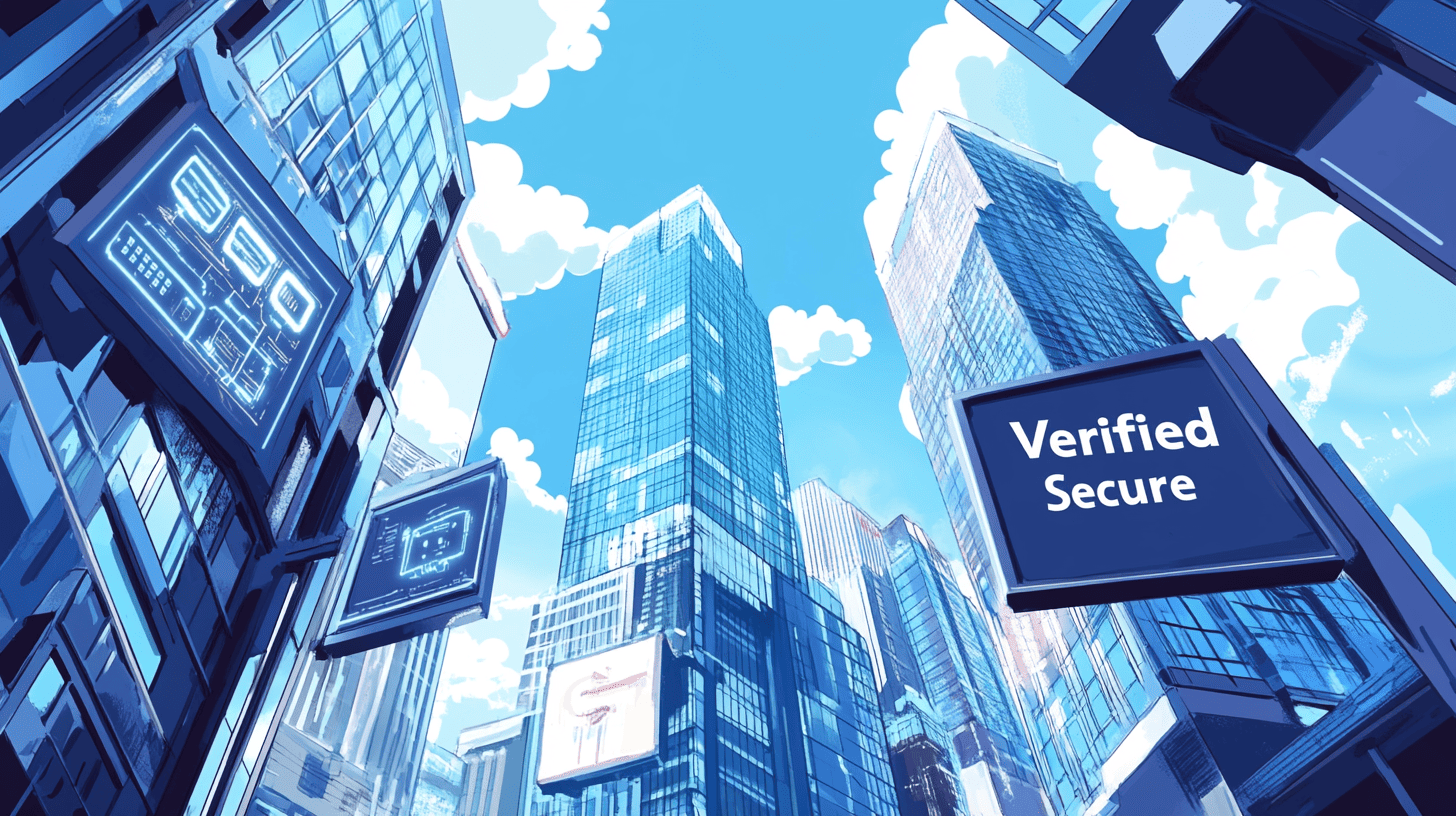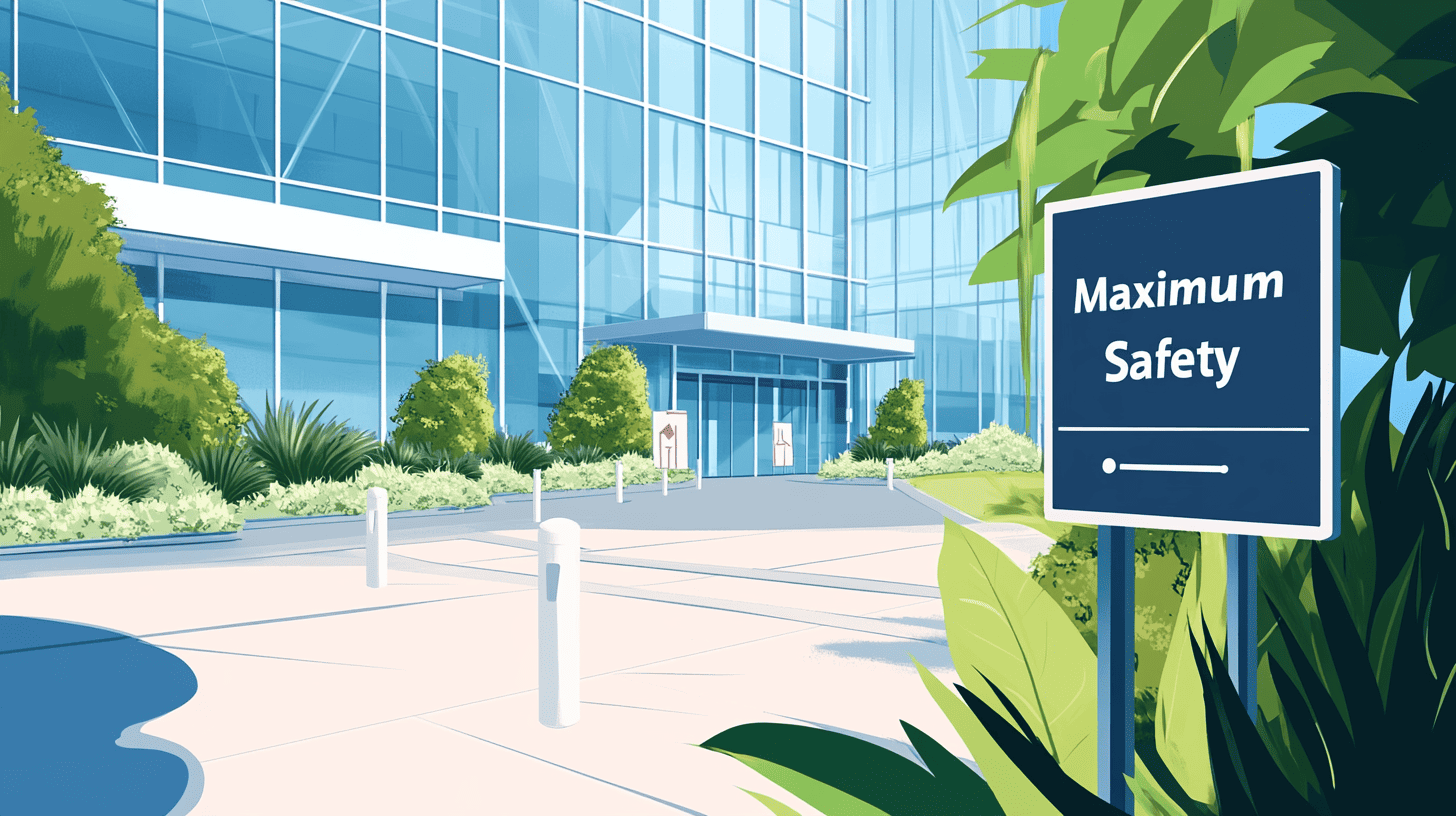Worried about scams when buying that perfect .ai domain? It's a common fear. Secure your investment by using trusted platforms and following key safety steps.
To buy securely, use reputable platforms like GoDaddy (registrar) or Sedo (marketplace). Always verify sellers, use escrow services for marketplace deals, enable domain lock, and protect your personal info with WHOIS privacy. Direct login beats email links every time.

Buying a domain, especially a valuable .ai one, feels exciting. But you need to be careful. Let's break down how to stay safe during the process, making sure your new digital asset is truly yours.
How do I buy a domain without getting scammed?
Seen emails about domain renewals you don't remember? Scammers target domain owners. Learn simple checks to avoid falling for fake notices or phishing attempts and keep your domains safe.
Avoid scams by verifying all communications. Log directly into your registrar account (like GoDaddy) instead of clicking email links. Be wary of urgent, unexpected renewal notices or too-good-to-be-true offers. Use strong passwords and two-factor authentication.

Scams are everywhere online. Domain names are valuable assets, so they attract bad actors. I remember getting an email once that looked exactly like it was from my registrar, warning my domain [example-domain-i-own].ai was expiring tomorrow! Panic set in. Luckily, I remembered the golden rule: never click the link. I went directly to the registrar's site, logged in, and saw my domain was fine for another year. It was a close call. Common tricks include fake renewal notices, phishing emails asking for login details, and offers for services you didn't request. Always verify. Go directly to GoDaddy or Sedo's website. Check the sender's email address – scammers often use slightly misspelled versions. If an offer seems too good, it probably is. Use the security tools available. Domain lock stops someone from transferring your domain away without permission. WHOIS privacy keeps your name and address out of public databases, making you less of a target. And always use 2FA on your account. It's an extra step, but worth it.
Recognizing Common Domain Scams
You need to know what to look for. Fake invoices might look real but have wrong details or payment links. Phishing emails create urgency, maybe saying your account has a problem. They want you to click and log in on a fake site. Deceptive service offers might promise amazing SEO results if you just pay a fee – often worthless.
The Golden Rule: Direct Verification
Never trust links or attachments in unexpected emails about your domains. Always open a new browser window and type the official website address (like godaddy.com or sedo.com) yourself. Log in there to check notifications or domain status. If you're unsure about an email, contact the platform's official support through their website, not by replying to the suspicious email.
Essential Security Settings
These are basic protections you should always use:
- Domain Lock: Found in your registrar's control panel. Turn it on for all your domains. It prevents transfers unless you specifically unlock it.
- WHOIS Privacy: Most registrars offer this, sometimes for free, sometimes for a small fee. It replaces your personal contact info in the public WHOIS database with proxy information.
- Two-Factor Authentication (2FA): Secure your registrar account itself. This means even if someone gets your password, they can't log in without a second code, usually from your phone.
Here's a quick table:
| Scam Type | How to Spot It | Prevention Strategy |
|---|---|---|
| Fake Renewal Notice | Urgent tone, unexpected timing, suspicious link | Log in directly to registrar, check dates |
| Phishing Email | Asks for login/payment, mimics registrar | Never click links, verify sender, use 2FA |
| Deceptive Service Offer | Unsolicited, promises unrealistic results | Ignore, research provider independently |
Is it safe to buy a domain from GoDaddy?
Heard stories about GoDaddy? As the biggest registrar, they get attention. But are they actually a secure place to buy your important .ai domain or manage your portfolio?
Yes, GoDaddy is generally safe for buying domains. They manage millions and offer security tools like domain protection plans, SSL certificates, and website security options. Like any platform, user vigilance is still important for maximum safety.

GoDaddy is huge. They handle more domains than anyone else, over 82 million. That means they have a lot of experience and robust systems in place. I've personally registered many domains with them over the years, including some now listed on ono.ai, and found the registration process straightforward. They offer different levels of "Domain Protection." Basic privacy is often included or cheap, hiding your details from the public WHOIS database. Higher tiers add features like preventing accidental expiration or requiring extra verification for transfers. These cost more, but can be worth it for valuable domains like premium .ai names. They also sell SSL certificates for websites and security packages (like firewalls and malware scanning). These are important if you're building a site on your domain, not just holding it as an investment. While GoDaddy is safe for the act of registering a domain, you still need to be careful. Use strong passwords, enable 2FA on your GoDaddy account. Their size also makes them a target for phishing attempts pretending to be them, so always verify communications directly on their site.
GoDaddy's Scale and What It Means
Being the largest registrar means GoDaddy has significant infrastructure and experience managing domains. This generally translates to reliable core services. However, it also means they are a big target for phishing attacks mimicking their brand. Their business model also involves significant upselling of related services, which some users find annoying, but doesn't inherently make the platform unsafe for core domain registration.
Understanding GoDaddy's Security Tools
GoDaddy offers several layers of security, often as paid add-ons:
- Domain Protection Plans: These range from basic WHOIS privacy to plans that prevent unauthorized transfers (requiring extra verification) and help recover domains if something goes wrong. Assess if the cost is worth the value of your domain.
- SSL Certificates: Essential if you host a website on the domain, encrypting data between the server and visitors. Not directly related to domain ownership security, but important for the domain's use.
- Website Security: Firewalls, malware scanning, etc. Again, this protects an associated website, not the domain registration itself.
- Account Security: Features like 2FA are crucial for protecting access to your GoDaddy account where your domains are managed.
GoDaddy for Registration vs. Marketplace Buys
GoDaddy is primarily a registrar, meaning it's excellent for registering new, available domains. They also operate GoDaddy Auctions, a marketplace for buying and selling already owned domains. However, for premium domain aftermarket purchases, specialized marketplaces like Sedo might offer a more focused experience, particularly regarding escrow services.
Here’s a summary of relevant GoDaddy features:
| GoDaddy Feature | What It Does | Relevance to Security |
|---|---|---|
| Domain Protection Plans | Hides WHOIS info, prevents accidental loss/transfer | Protects identity, secures ownership |
| SSL Certificates | Encrypts website data | Secures user data on associated website |
| Website Security | Firewall, malware scanning | Protects associated website integrity |
| 2FA | Extra login verification step | Secures account access |
Where is the safest place to buy domain?
Overwhelmed by choices for buying domains? Finding a truly secure platform feels crucial, especially for high-value .ai names. What makes one place safer than another for your investment?
The safest place combines reputation, strong security features, and processes like escrow for marketplace buys. Reputable registrars (like GoDaddy) and specialized marketplaces (like Sedo with escrow) are generally safest. Avoid unknown or brand-new platforms.

Safety isn't just about one platform name. It's about what they offer and how they operate. When I evaluate platforms for managing the ono.ai portfolio or recommend options to buyers, I look at several factors. First, look at reputation. Has the company been around? Are they well-known in the industry? GoDaddy, Sedo, Namecheap – these are established names. New platforms might be fine, but carry more risk until they prove themselves. Second, check their security tools. Do they offer domain lock? This is non-negotiable for me. Do they offer WHOIS privacy? How easy is it to set up 2FA on your account? Third, and this is vital if you're buying from another person (not registering a new domain), is there a secure transfer process? This is where marketplaces like Sedo excel. They use an escrow service. You pay Sedo, the seller transfers the domain to you, you confirm you received it, then Sedo pays the seller. This protects both sides. We use services like Sedo and Escrow.com for all our ono.ai sales for this reason – it provides peace of mind for buyers like Mark Shenng. Good customer support is also part of safety. If something goes wrong during the transfer, you need help quickly. Finally, transparency matters. Are the fees clear? Is the process explained well?
Reputation and Track Record
Established companies generally have more robust systems and a reputation to uphold. Look for platforms frequently mentioned in the industry and with a long history. While reviews can be helpful, be aware they can sometimes be manipulated; look for consistent patterns.
Essential Security Features Checklist
Any platform you consider should offer:
- Domain Lock: To prevent unauthorized transfers.
- WHOIS Privacy: To protect your personal information.
- Two-Factor Authentication (2FA): To secure your account login.
- Clear Transfer Process: Easy-to-understand steps for moving domains in or out.
The Importance of Escrow Services
When buying a domain from someone else (not registering it new), escrow is the safest way. The escrow service acts as a neutral third party.
- Buyer pays the escrow service.
- Escrow service confirms payment to the seller.
- Seller transfers the domain to the buyer.
- Buyer confirms receipt of the domain to the escrow service.
- Escrow service releases funds to the seller.
Platforms like Sedo have this built-in. For direct deals, use a standalone service like Escrow.com.
Support and Transparency Matter
If a transfer hits a snag, you need access to knowledgeable support. Check the platform's support options (chat, phone, email) and response times if possible. Clear Terms of Service, transparent pricing (including transfer fees), and a well-documented process also contribute to a feeling of safety and trust.
Here’s a table summarizing safety factors:
| Safety Factor | Why It Matters | Examples |
|---|---|---|
| Established Reputation | Indicates stability, experience, user trust | GoDaddy, Sedo, Namecheap, Escrow.com |
| Security Tools | Protects domain from theft, identity from exposure | Domain Lock, WHOIS Privacy, 2FA |
| Escrow Service | Ensures secure fund/domain exchange in P2P sales | Sedo's built-in service, Escrow.com |
| Responsive Support | Helps resolve issues during complex transfers | Accessible chat, phone, email support |
| Transparency | Avoids hidden fees, clarifies process | Clear ToS, pricing, transfer steps |
Which platform is best for buying domains?
GoDaddy? Sedo? Another registrar? Choosing the best platform depends on your specific needs. Are you registering new or buying used? What features matter most for your .ai domain strategy?
The "best" platform depends on your goal. For registering new domains, registrars like GoDaddy or Namecheap are good. For buying existing premium domains from others, a marketplace like Sedo, known for secure escrow, is often better.

There's no single "best" for everyone. It really depends on what you're trying to do. When I started ono.ai, I used registrars like GoDaddy to secure some names initially. But for acquiring premium, already-registered names and for facilitating sales, marketplaces and escrow are essential. If you thought of a great .ai name and checked that it's available to register fresh, then a registrar is your best bet. GoDaddy is popular and has a huge system, Namecheap often has competitive prices and includes privacy, other registrars exist too. These platforms are designed for easy registration of new domains. However, if you're looking for a premium, short, memorable .ai domain – like 00.ai or books.ai from our ono.ai collection – chances are someone already owns it. In this case, you need a marketplace like Sedo. Sedo connects buyers and sellers. They handle the negotiation (or fixed price listing) and, crucially, the secure transfer using escrow. This is their specialty. GoDaddy also has auctions where you can bid on expiring or listed domains. This can sometimes get you a good price, but requires more effort and monitoring. You could also find a domain owner directly and agree on a price, but you absolutely must use a trusted third-party escrow service like Escrow.com to handle the payment and transfer safely.
Buying New vs. Buying Existing Domains
- New Registration: If the domain name is available, use a registrar. Focus on price, ease of use, included WHOIS privacy, and basic security features.
- Existing/Premium Domain: If someone else owns the domain, use a marketplace or broker, or a direct sale via escrow. Focus on the platform's reputation for secure transfers, escrow process, inventory, and negotiation tools.
Comparing Popular Registrars
- GoDaddy: Largest selection, extensive tools, but often involves upselling. Good all-around choice, especially if managing many domains.
- Namecheap: Often better value, includes free WHOIS privacy. Known for being more user-friendly by some.
- (Other registrars like Porkbun, Dynadot also exist with varying features/pricing).
The Role of Marketplaces like Sedo
Sedo is the leading specialized marketplace for buying and selling existing domains.
- Large Inventory: Millions of domains listed by owners.
- Secure Escrow: Their core strength, ensuring safe transactions.
- Negotiation Tools: Facilitates offers and counter-offers.
- Valuation Services: Can help estimate domain worth.
This is the ideal environment for finding and securely purchasing premium names like those offered by ono.ai.
Auctions and Direct Sales with Escrow
- GoDaddy Auctions: Good for potentially finding deals on expiring or listed domains, but requires active participation.
- Direct Sale + Escrow.com: If you contact an owner directly, using Escrow.com provides the same security as a marketplace's built-in service for the transaction part.
Consider your primary need:
| Platform Type | Best For | Key Feature(s) | Example(s) |
|---|---|---|---|
| Registrar | Registering new, available domains | Direct registration, basic management | GoDaddy, Namecheap |
| Marketplace | Buying existing, premium domains from others | Large inventory, negotiation, secure escrow | Sedo |
| Auction Site | Bidding on expiring or listed domains | Potential for deals, requires bidding | GoDaddy Auctions |
| Third-Party Escrow | Direct P2P sales arranged independently | Secure transaction handling | Escrow.com |
How to safely purchase a domain?
Ready to buy but feeling nervous? One wrong step could be costly or lead to losing the domain. Follow this simple checklist to ensure your domain purchase is smooth and secure.
Safely purchase by: 1. Researching the domain's history. 2. Verifying the seller's legitimacy (especially on marketplaces). 3. Using a secure payment method, preferably escrow for P2P. 4. Enabling domain lock and 2FA immediately after purchase.

Okay, let's walk through the steps for a safe purchase, whether you're buying a brand new name or a premium one from a marketplace like Sedo. First, do a little homework on the domain itself, especially if it's been owned before. I always do a quick search on the Wayback Machine (archive.org) to see what kind of site used to be there. Also check WHOIS history tools (like DomainTools or Whoisology) and maybe even search if the domain is on any email blacklists. You don't want a name with a bad reputation, as it could affect SEO or email deliverability. Second, know who you're buying from. If it's a registrar like GoDaddy, you're buying from them directly (for new domains). If it's a marketplace like Sedo, check the seller's profile, ratings, and history if available. Stick to well-known, reputable platforms. Third, payment and transfer. For buying from another person (aftermarket), insist on using an escrow service like Sedo's built-in system or a third-party like Escrow.com. Never send money directly via wire transfer or unsecured methods without protection. Understand the transfer steps – the seller usually needs to unlock the domain at their registrar and provide an authorization (EPP) code to you. You then initiate the transfer at your chosen registrar. Fourth, the moment the domain is successfully transferred into your account, lock it down! Enable domain lock immediately. Turn on WHOIS Privacy. Make sure your registrar account uses a strong, unique password and has 2FA enabled. Fifth, confirm everything. Check that the WHOIS record now shows you (or your privacy service) as the owner. Keep copies of all transaction emails and receipts from the platform or escrow service.
Step 1: Investigate the Domain's Past
Before buying an existing domain, check its history.
- Wayback Machine (archive.org): See previous website content. Was it spammy or legitimate?
- WHOIS History: See previous owners (if not private).
- Blacklist Check: Search tools like MXToolbox to see if the domain is listed for sending spam.
A clean history is better for branding and SEO.
Step 2: Verify the Seller and Platform
- Use Reputable Platforms: Stick to well-known registrars (GoDaddy, Namecheap) and marketplaces (Sedo).
- Check Seller Profile (Marketplace): Look at ratings, transaction history, and tenure on the platform if available. Be cautious with new or low-rated sellers.
- Direct Seller: Be extra careful. Verify identity if possible, but prioritize using a secure escrow service regardless.
Step 3: Insist on Secure Payment and Transfer
- Escrow is Essential for Aftermarket: Use the marketplace's built-in escrow (Sedo) or a trusted third-party (Escrow.com). This protects both buyer and seller.
- Understand the Transfer Process: This usually involves the seller unlocking the domain, providing an EPP/Auth code, and the buyer initiating the transfer at their registrar. It can take a few days. Follow the platform's instructions carefully.
Step 4: Secure Your Domain Immediately
Once the domain appears in your account:
- Enable Domain Lock: Prevents unauthorized transfer requests.
- Enable WHOIS Privacy: Protects your personal contact information.
- Enable 2FA on Your Account: Secures access to your registrar/marketplace account.
Step 5: Confirm Ownership and Keep Records
- Check WHOIS: After the transfer completes (allow up to 24-48 hours for propagation), verify the WHOIS record shows your ownership details (or the privacy service).
- Save Records: Keep all emails, invoices, and transaction confirmations related to the purchase.
Here's a quick checklist table:
| Safety Check | Action | Why It's Important |
|---|---|---|
| Domain History Check | Use WHOIS history, Archive.org, blacklist search | Avoid domains with spammy/negative past |
| Seller/Platform Verification | Check reputation, ratings (if applicable), stick to known platforms | Avoid fraudulent sellers/platforms |
| Secure Payment/Transfer | Use Escrow for P2P, understand registrar transfer process (EPP code) | Protects funds, ensures smooth transfer |
| Immediate Security Settings | Enable Domain Lock, WHOIS Privacy, Account 2FA | Prevent unauthorized access/transfer |
| Ownership Confirmation | Check updated WHOIS records, save transaction details | Verify successful transfer, proof of purchase |
Conclusion
Buying .ai domains on GoDaddy or Sedo can be safe. Just use reputable platforms, enable security features like domain lock, verify everything, and always use escrow for marketplace deals.
Thank you for reading! Feel free to share this article, and remember to visit ono.ai for premium AI domain names.
